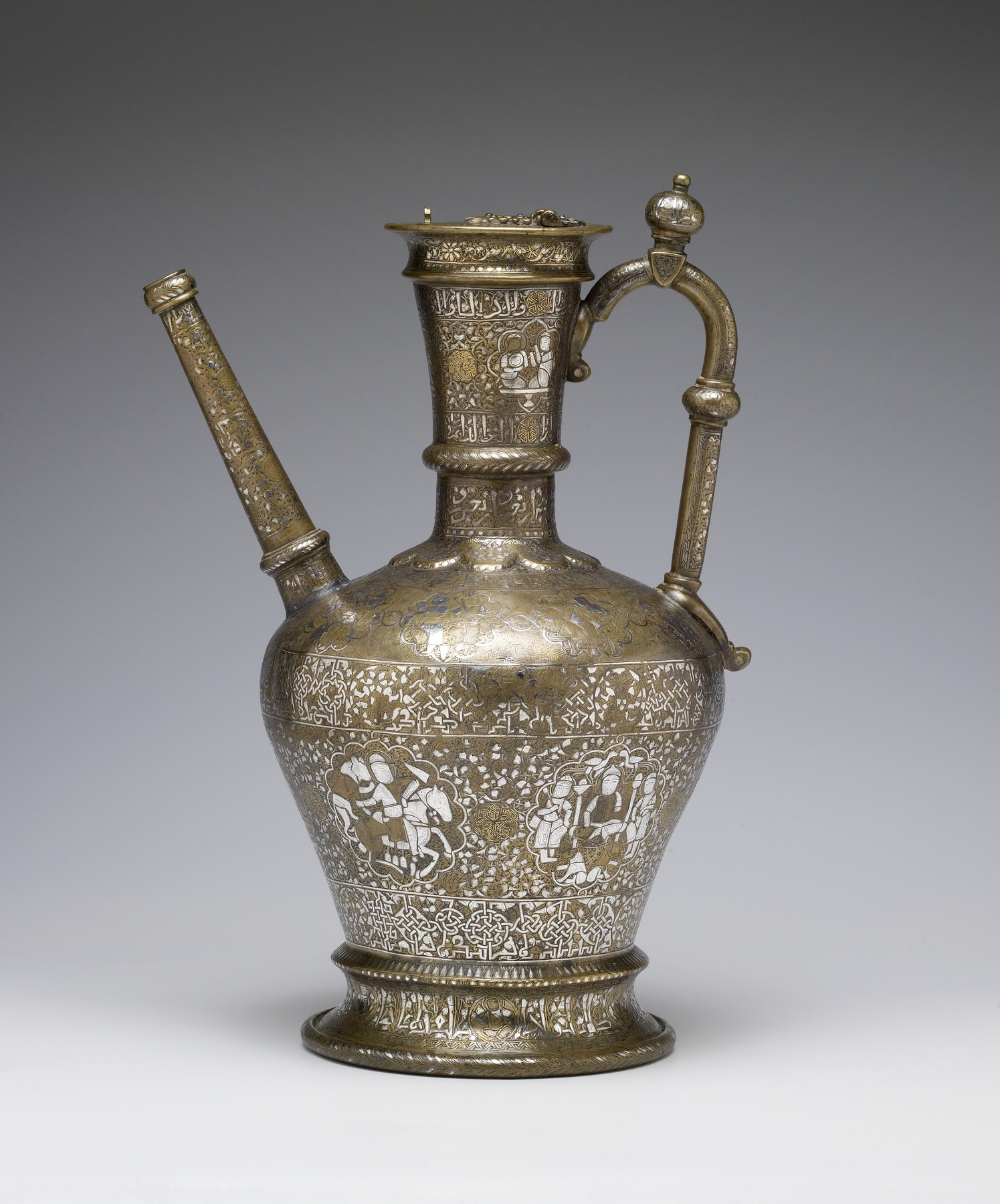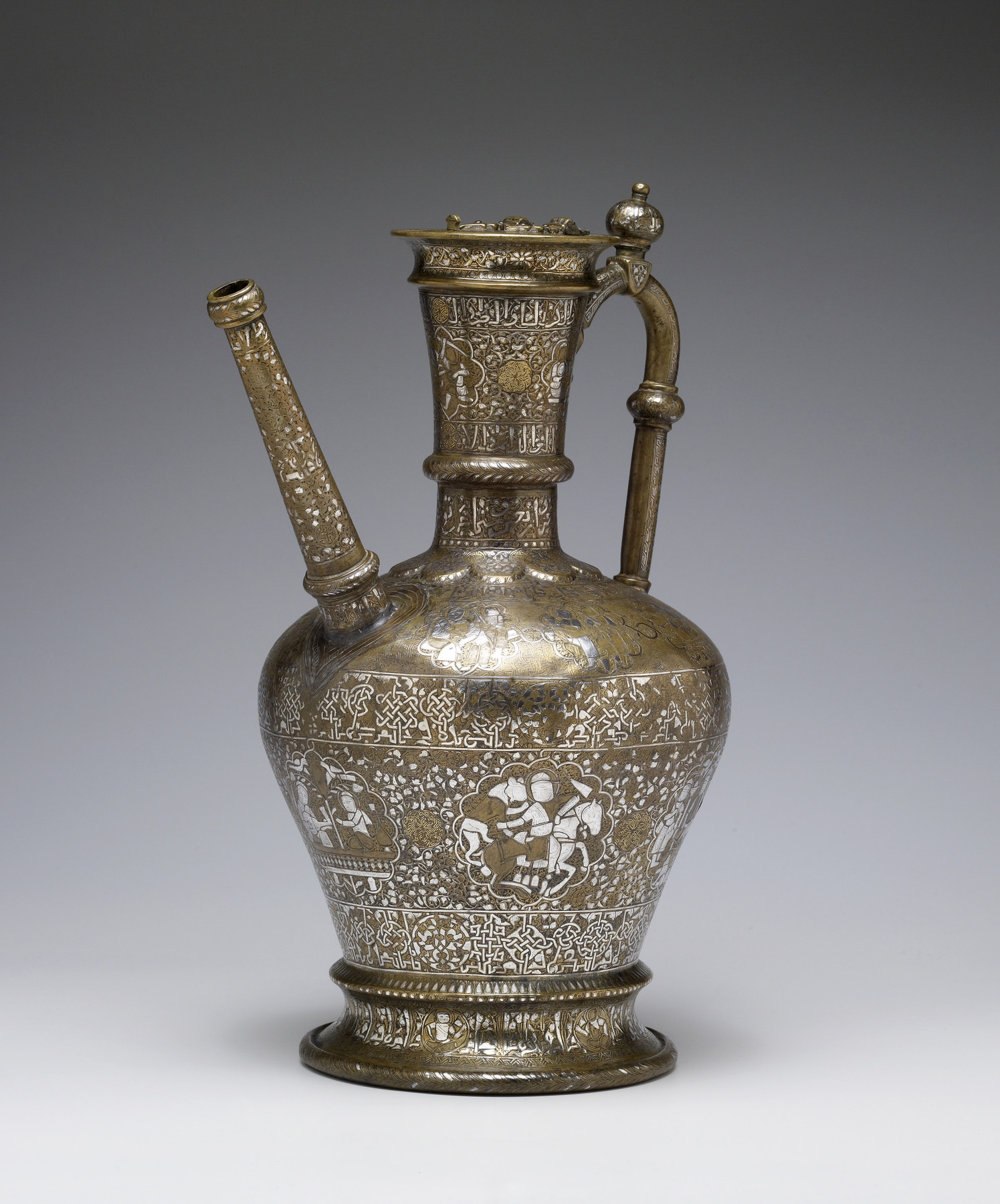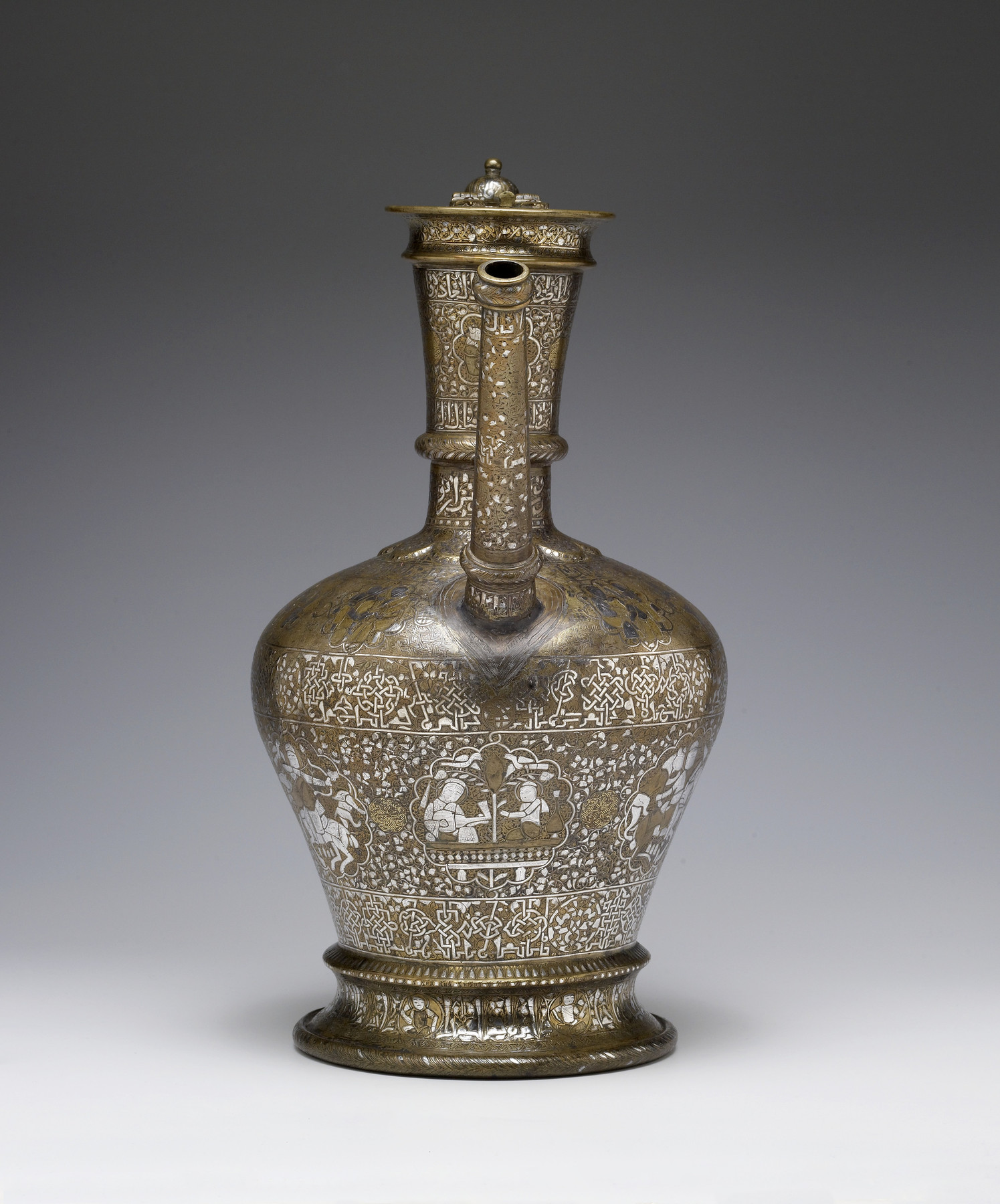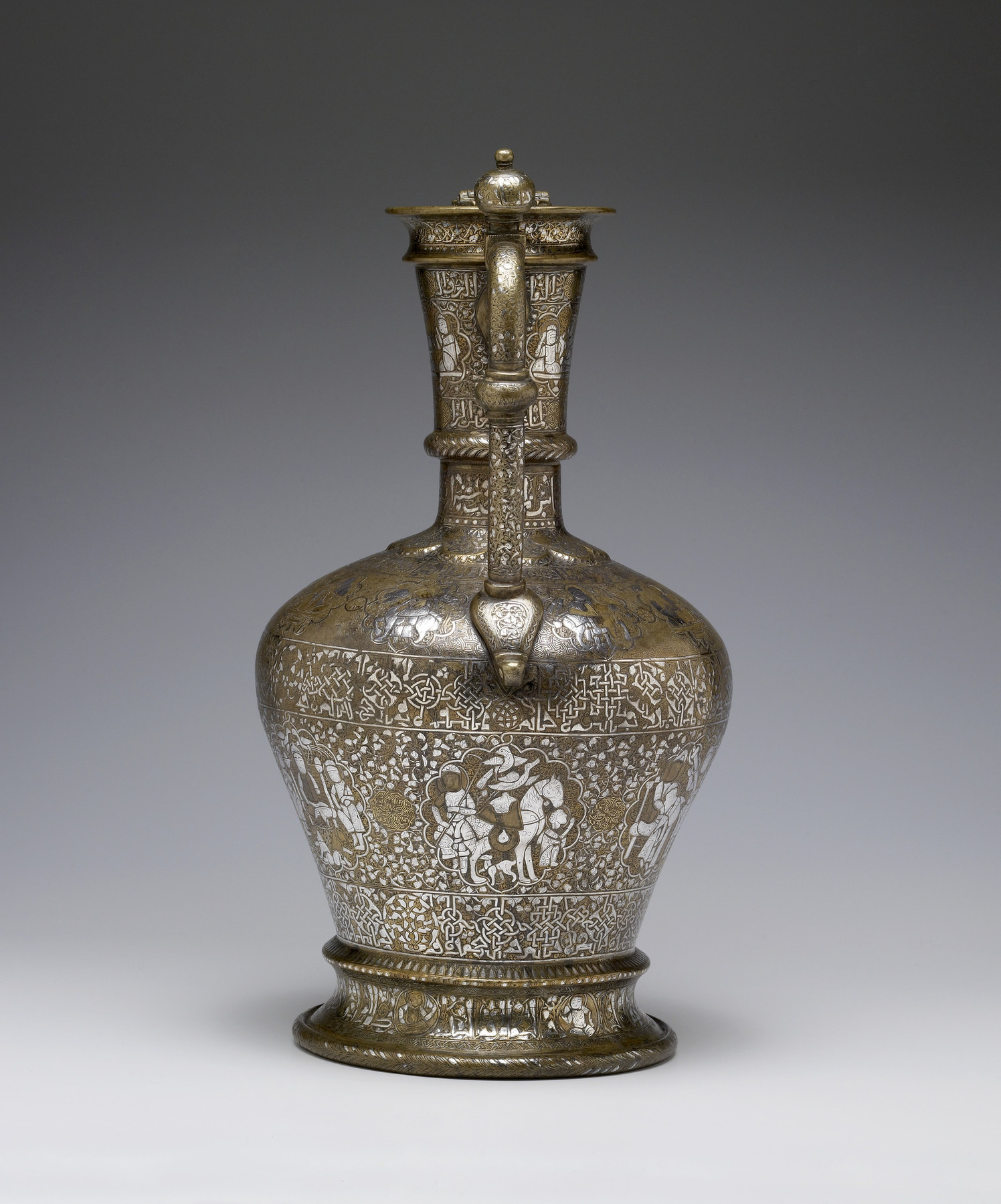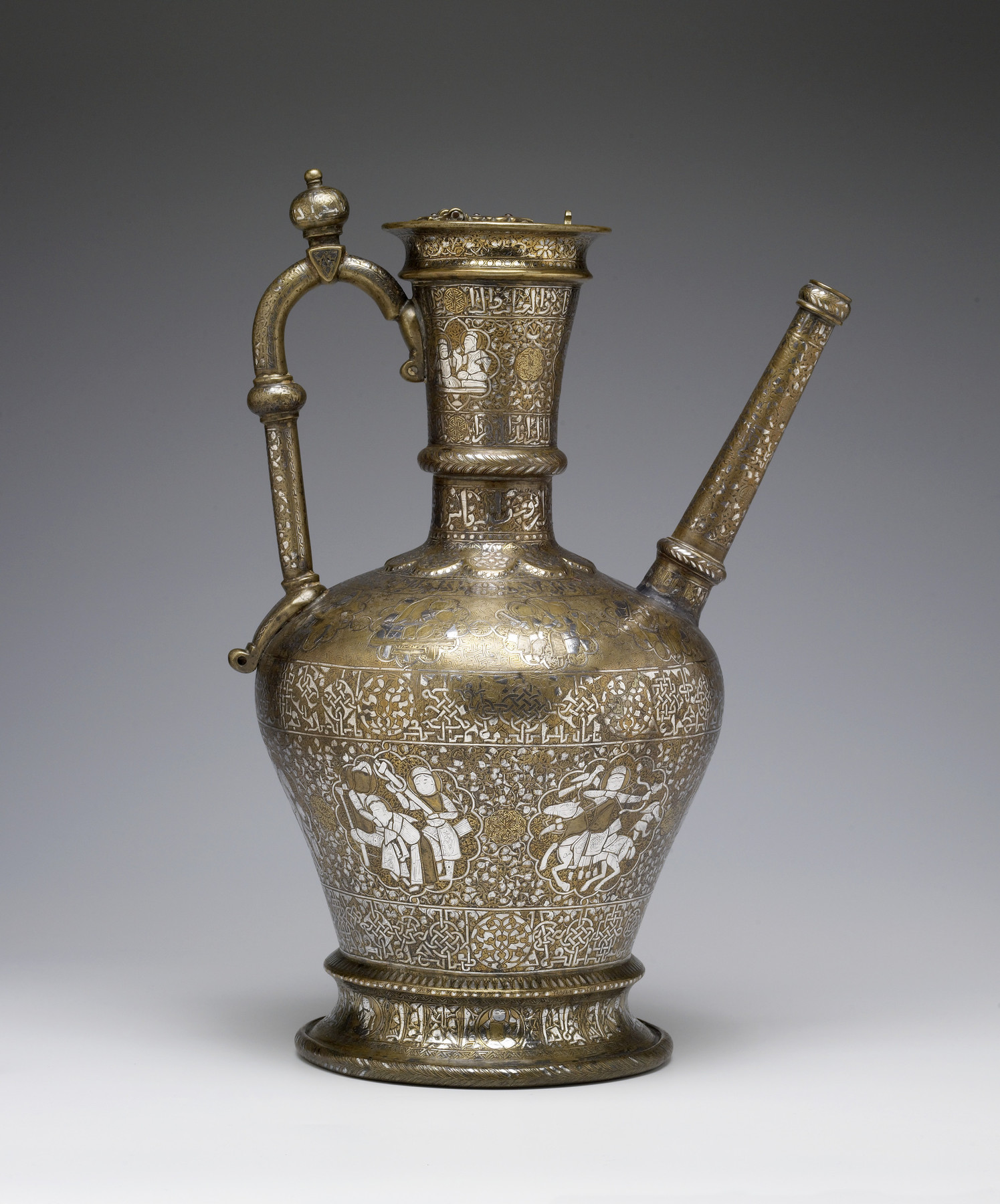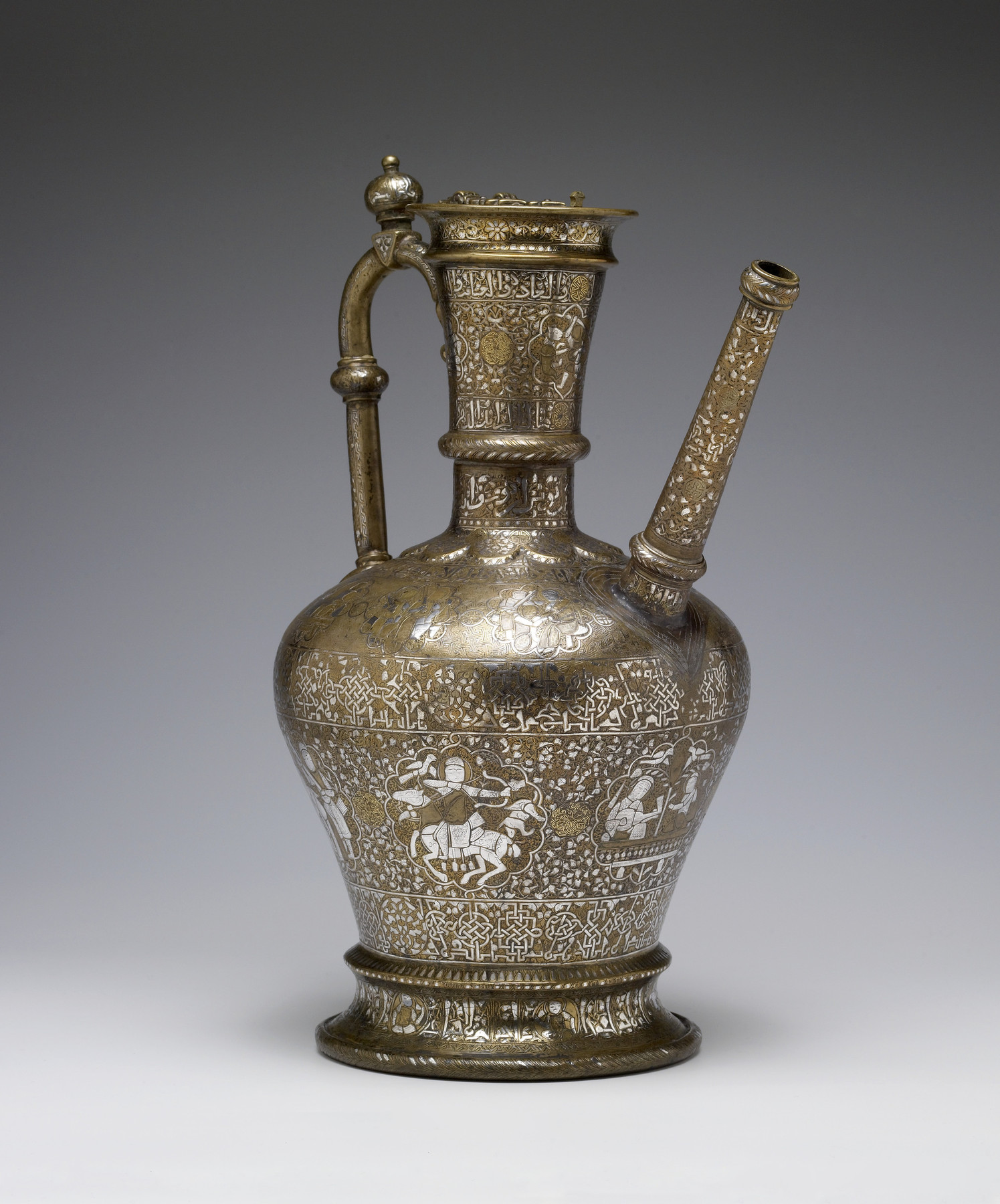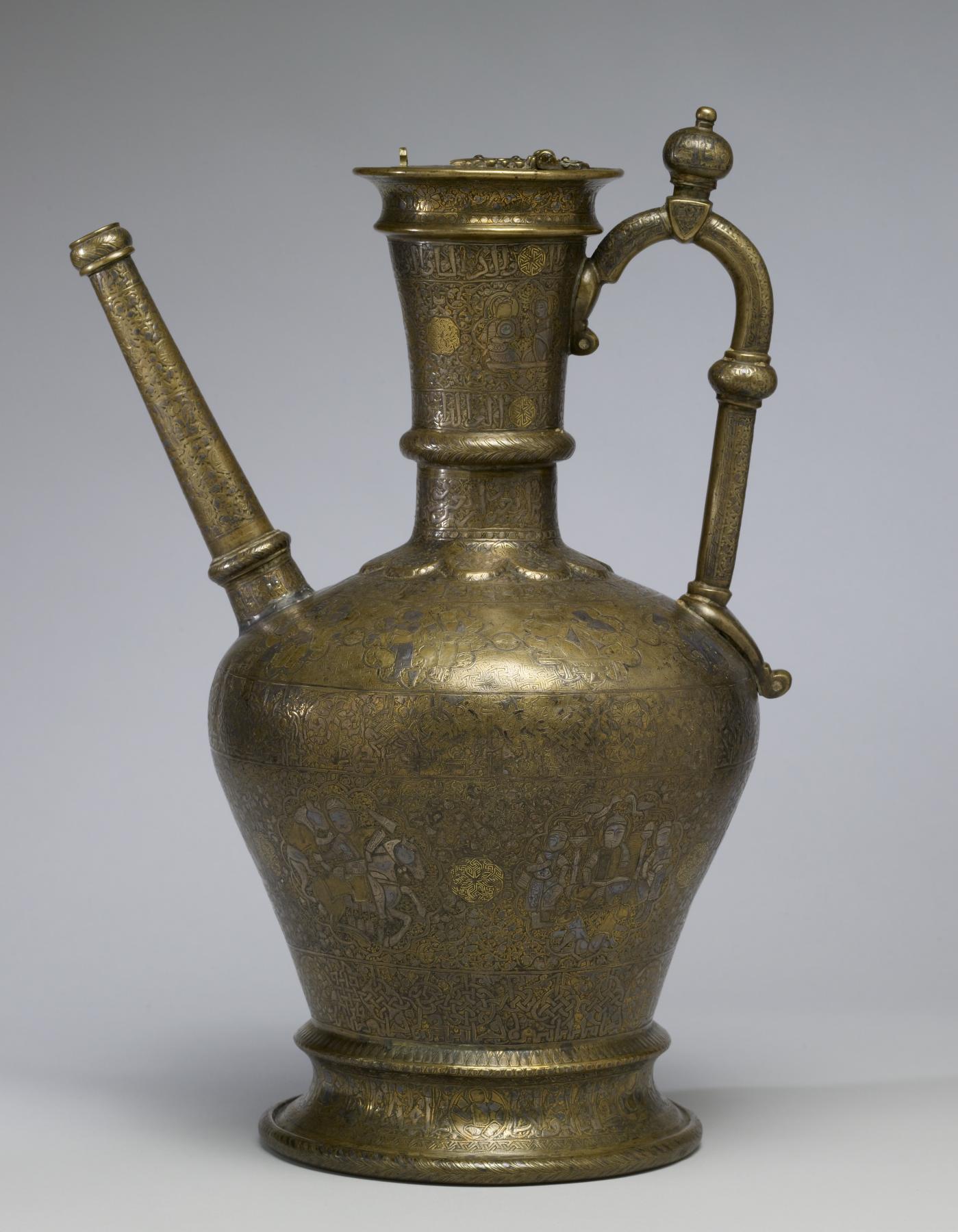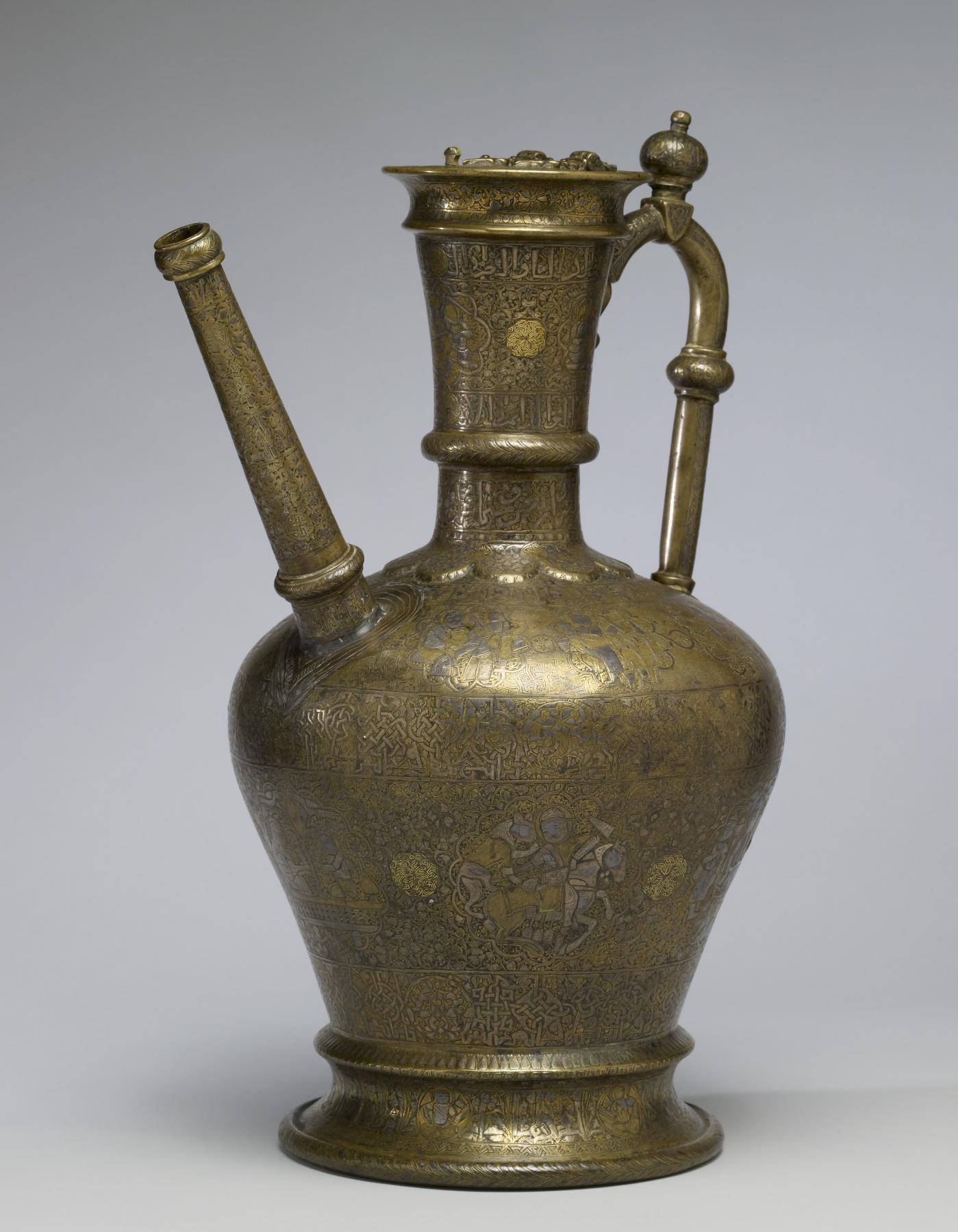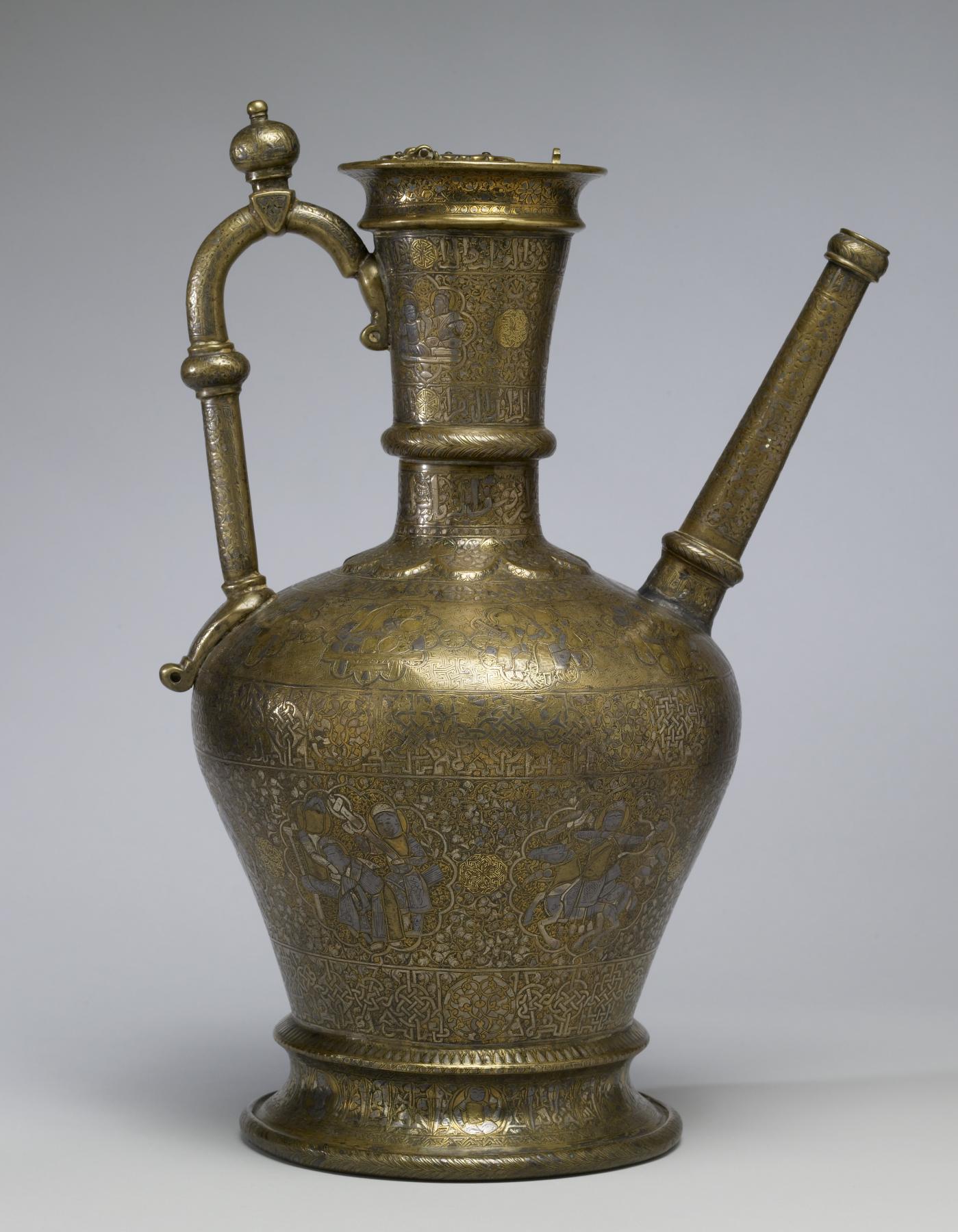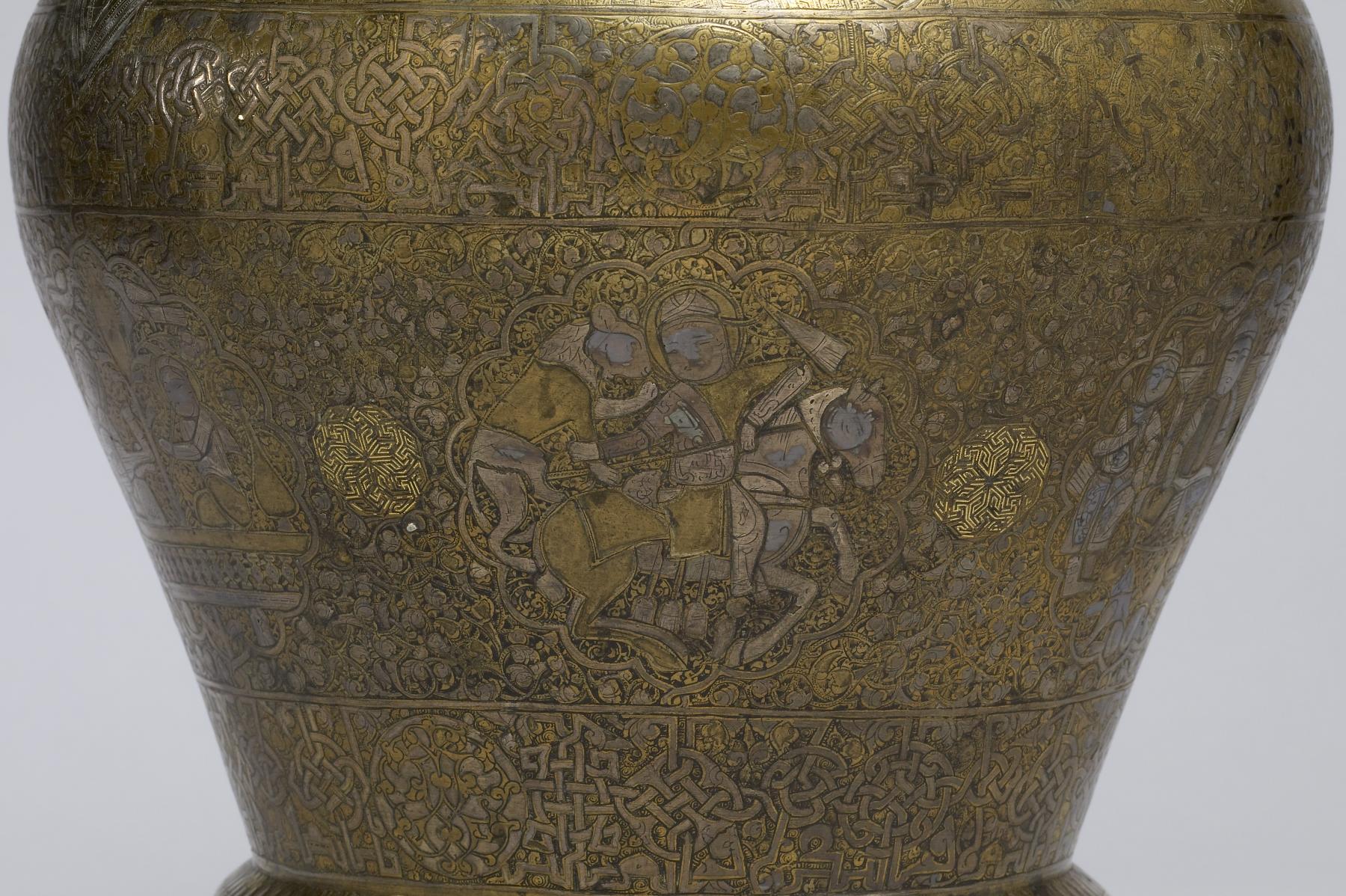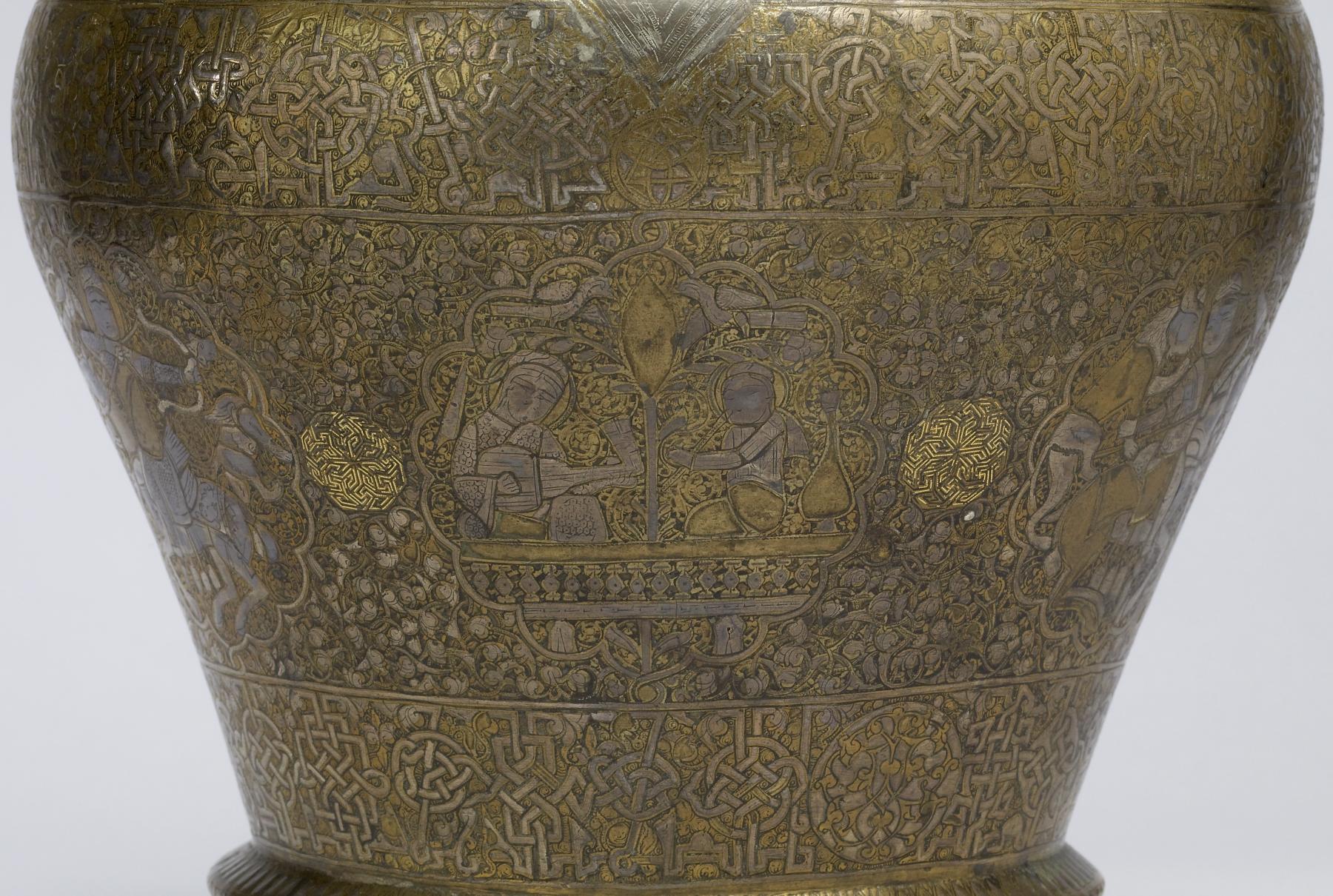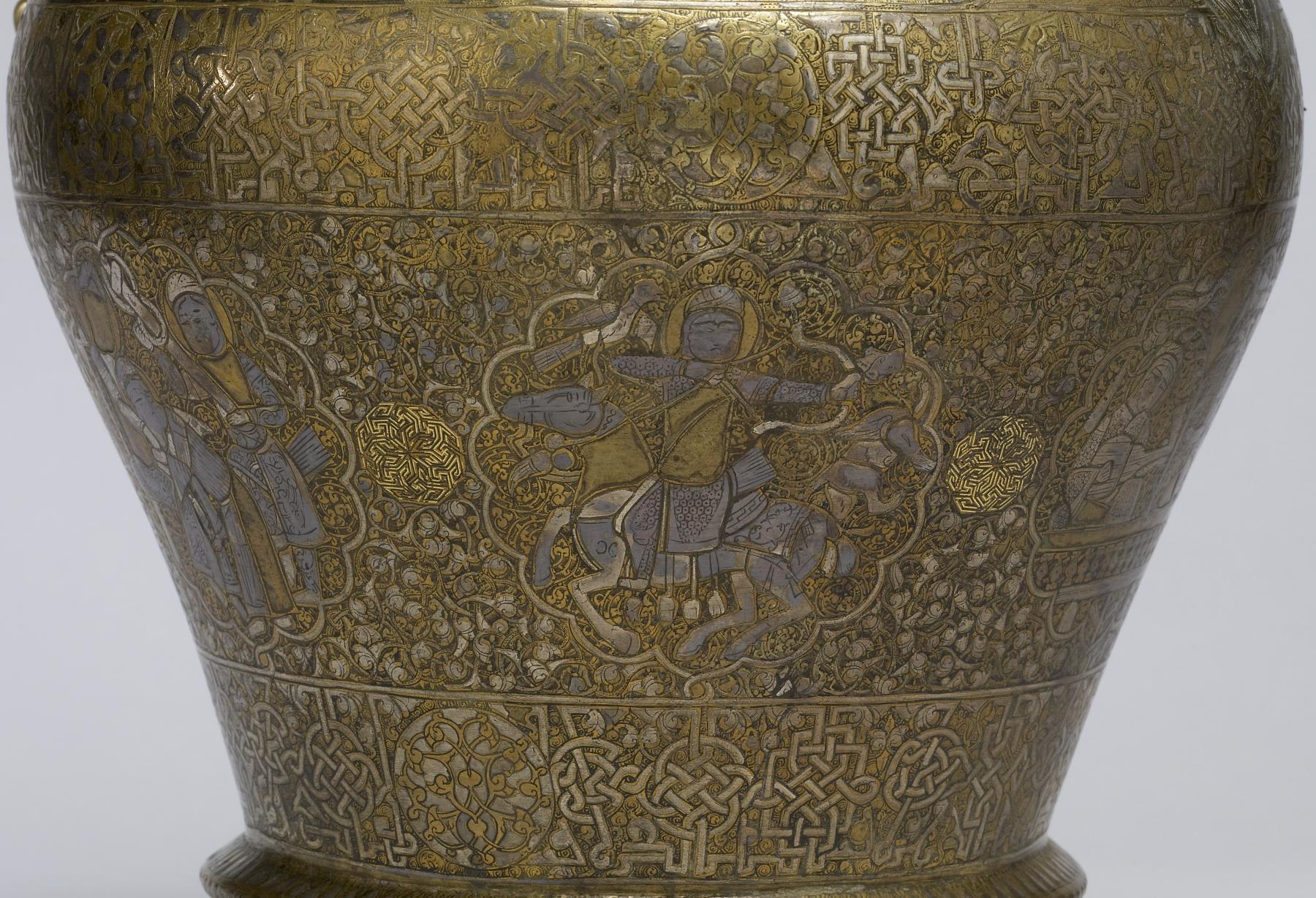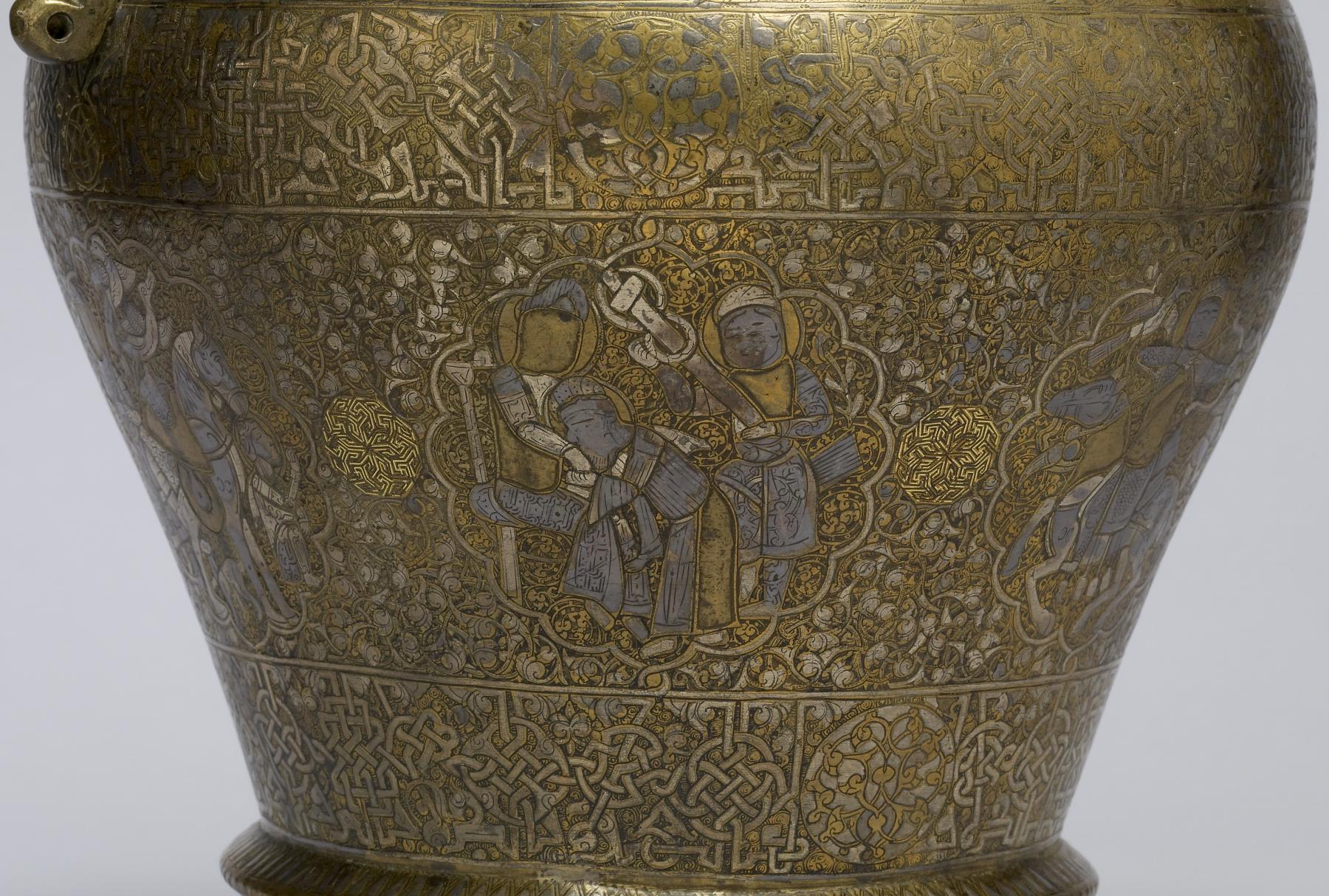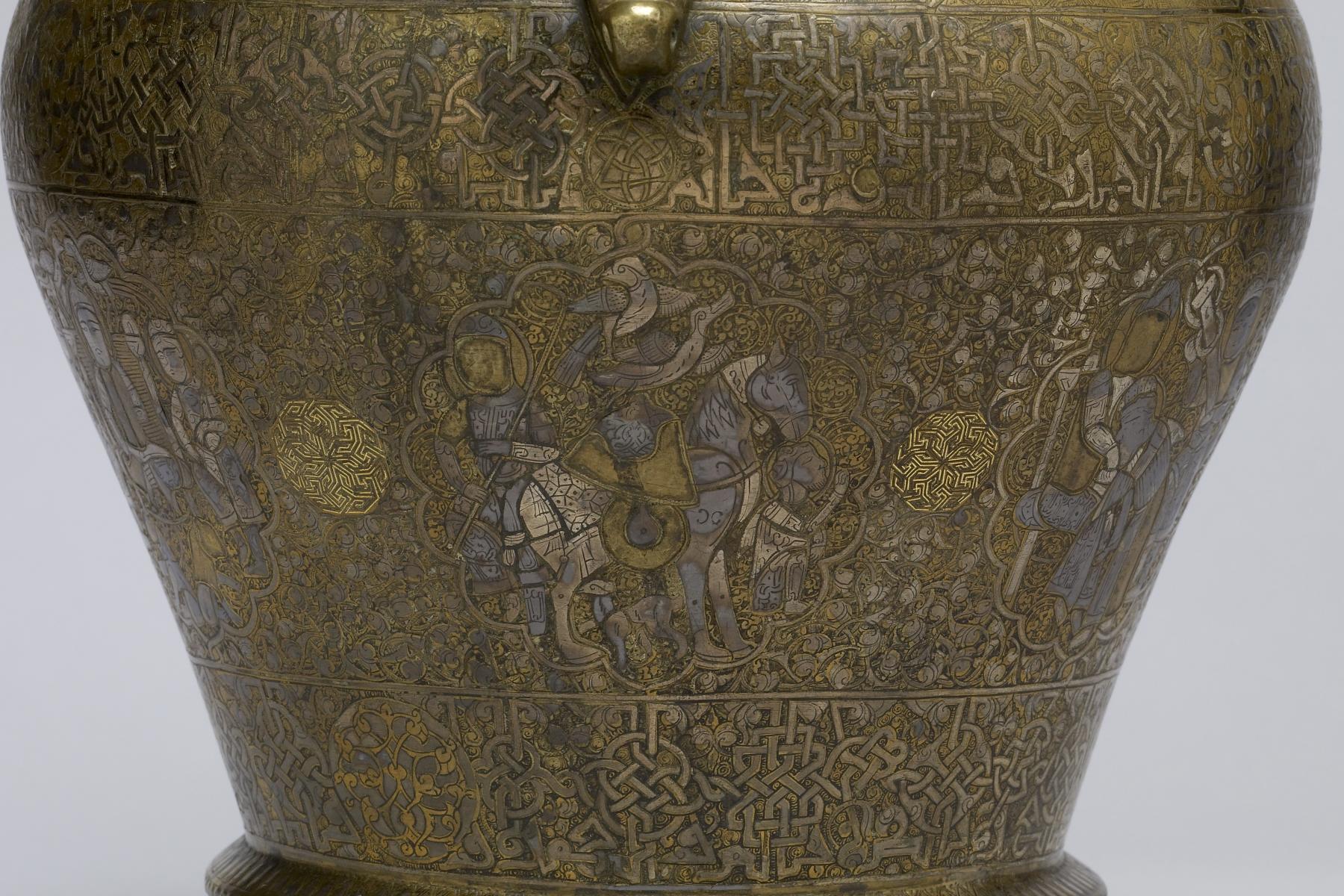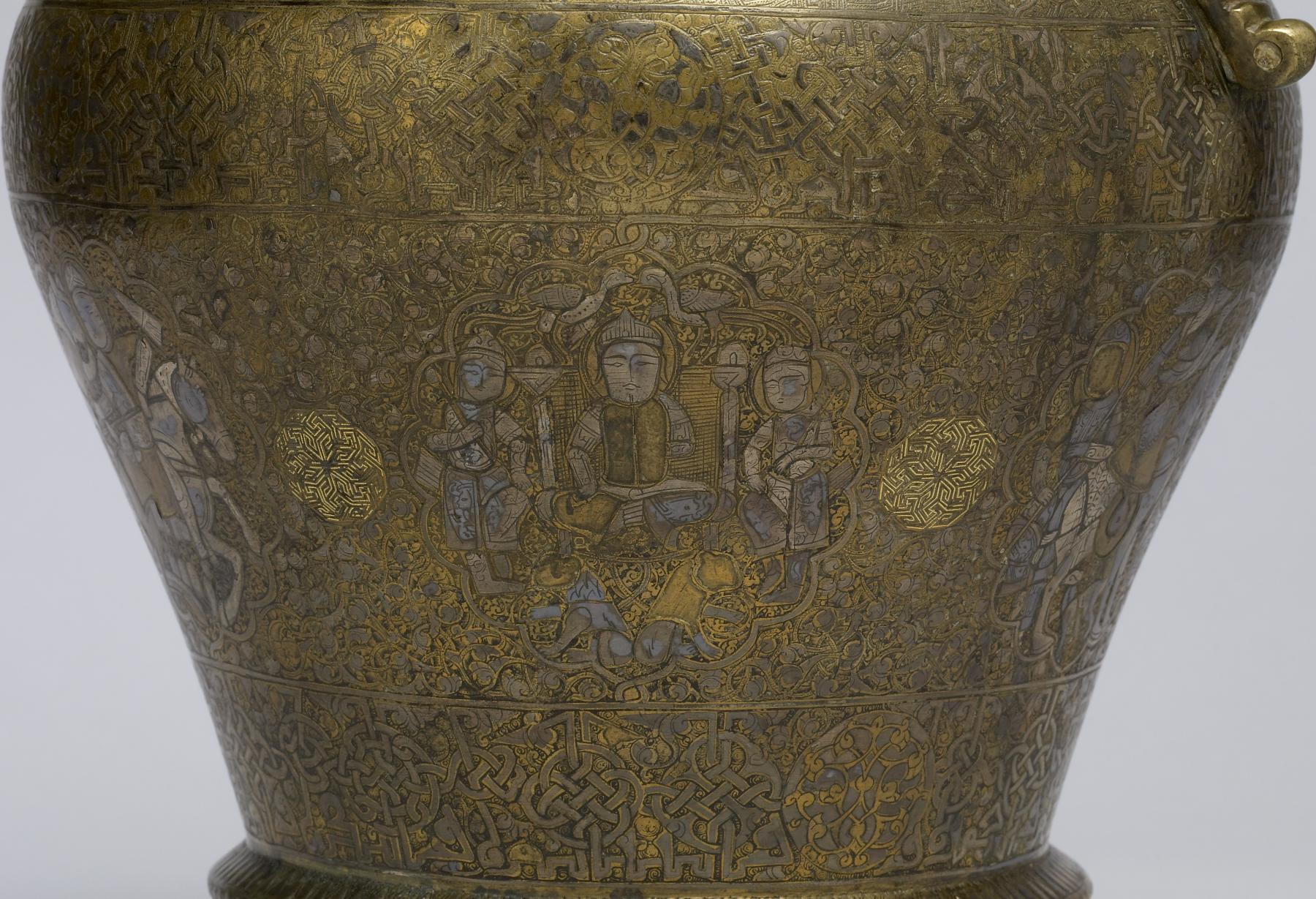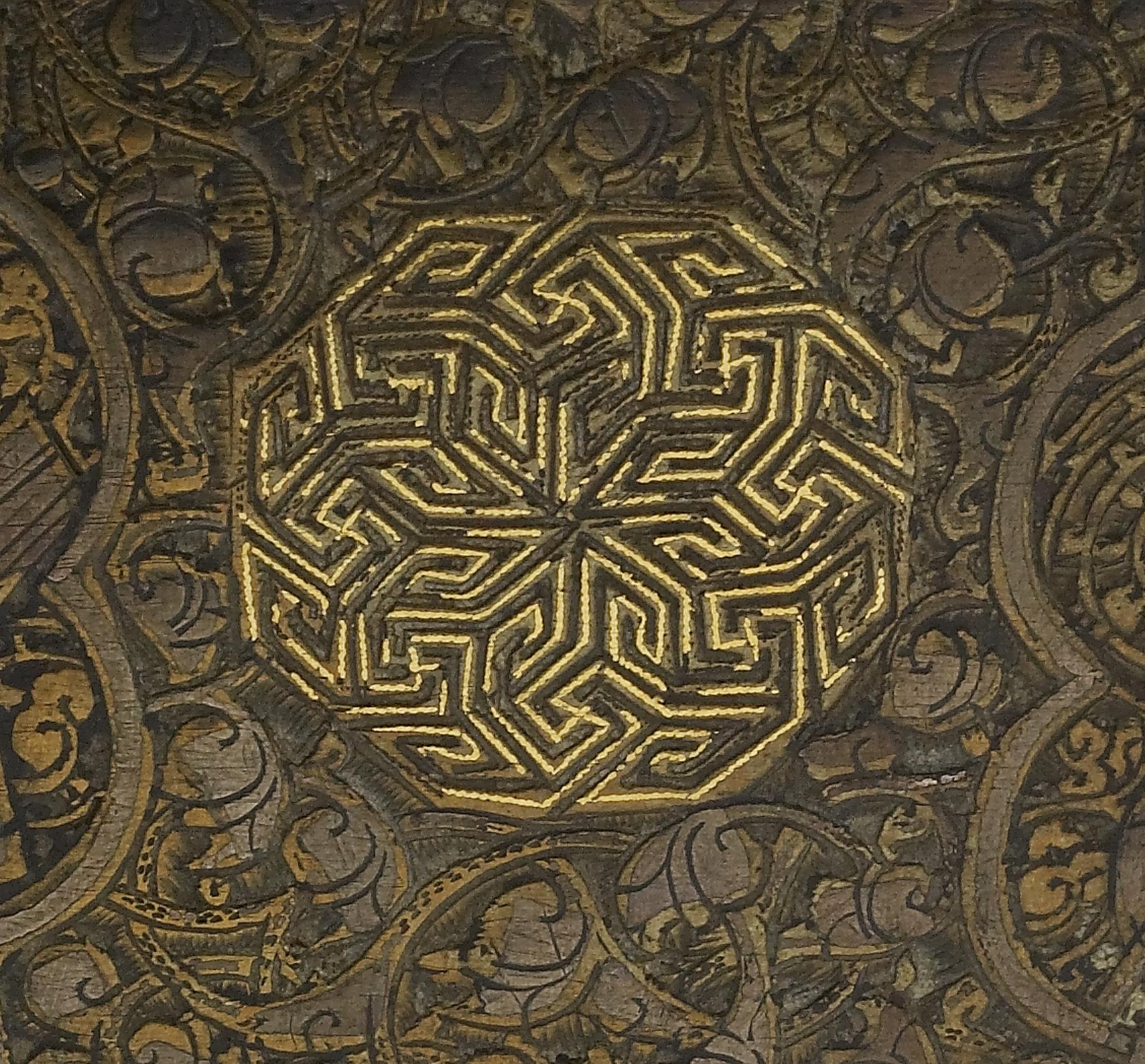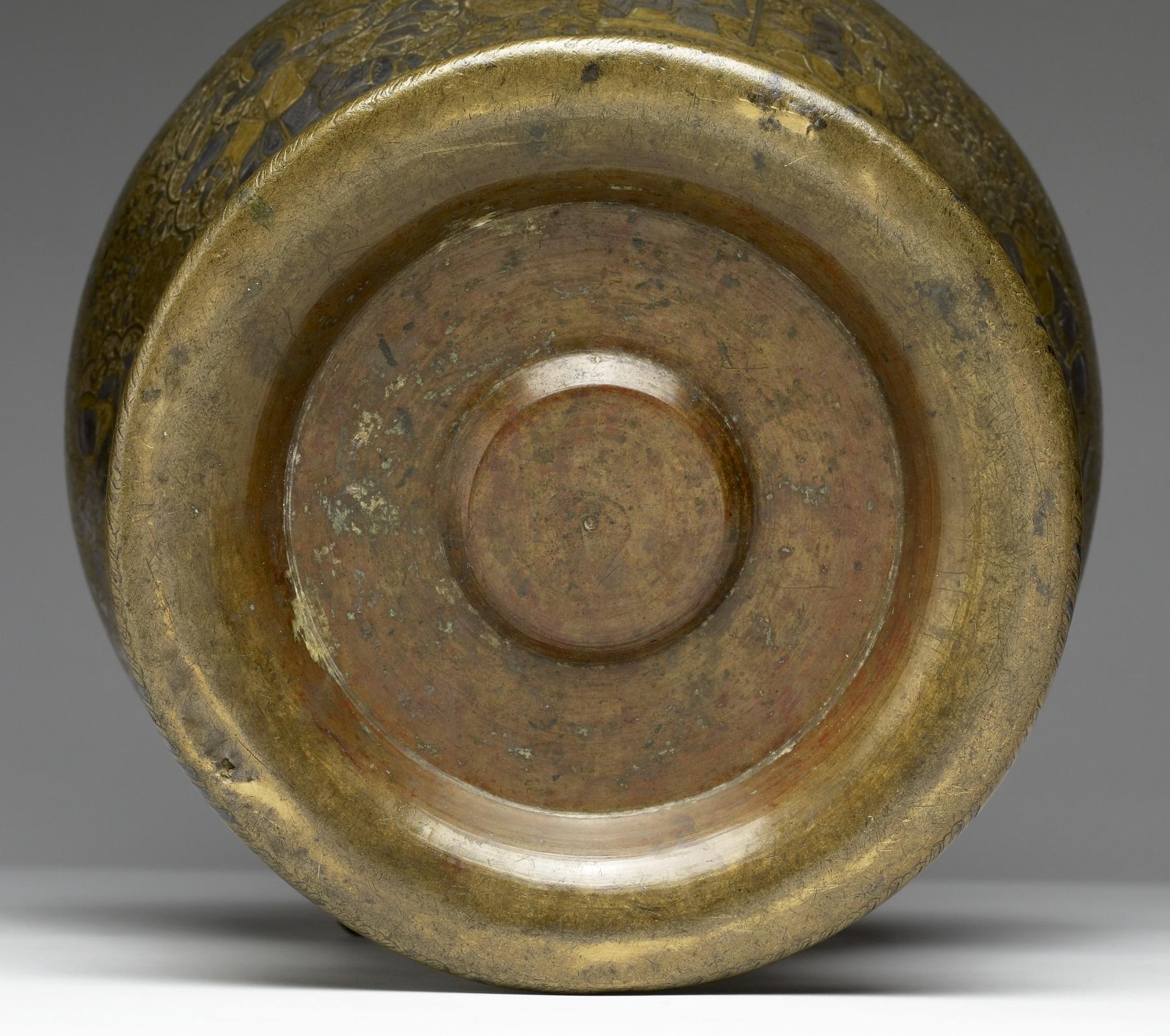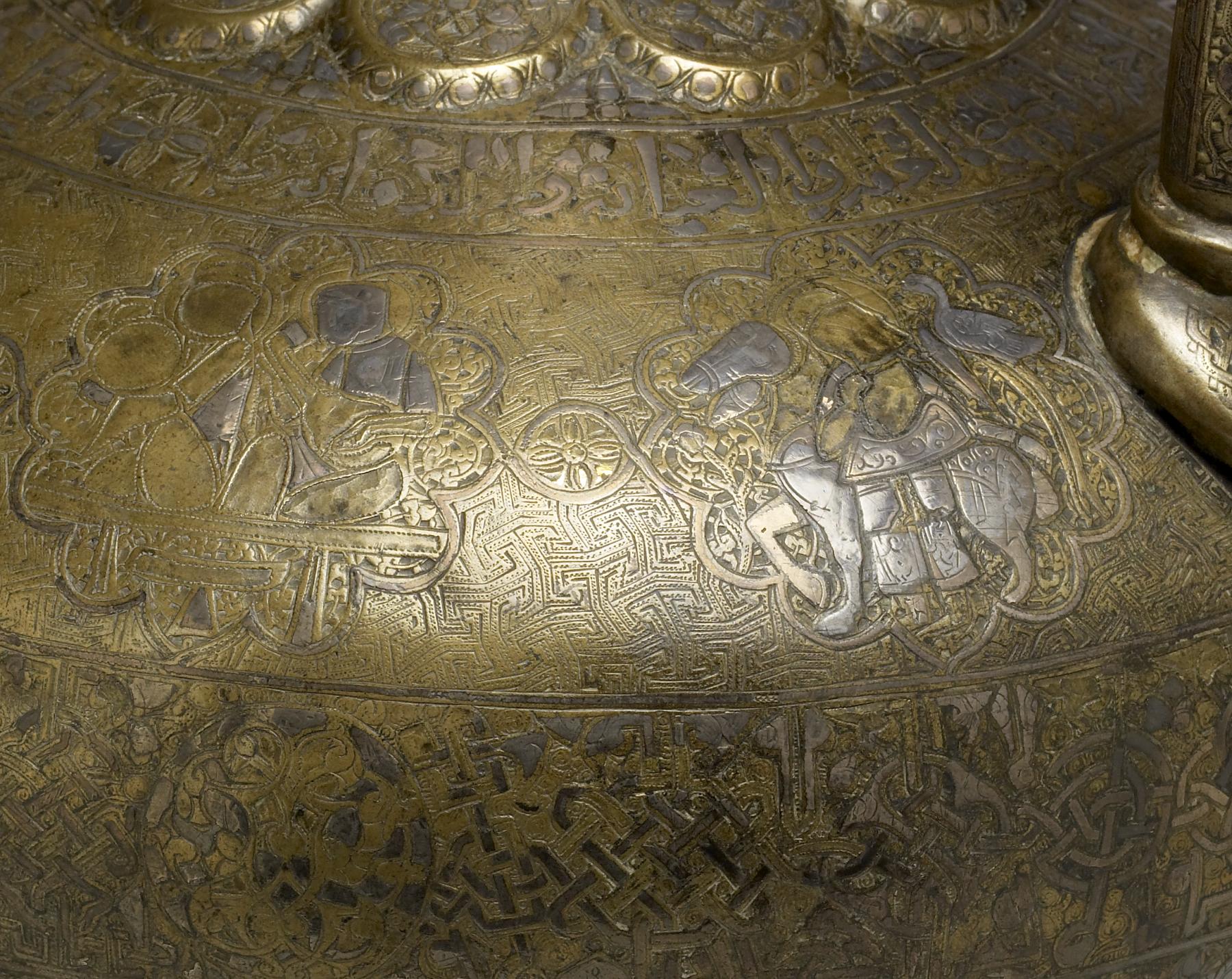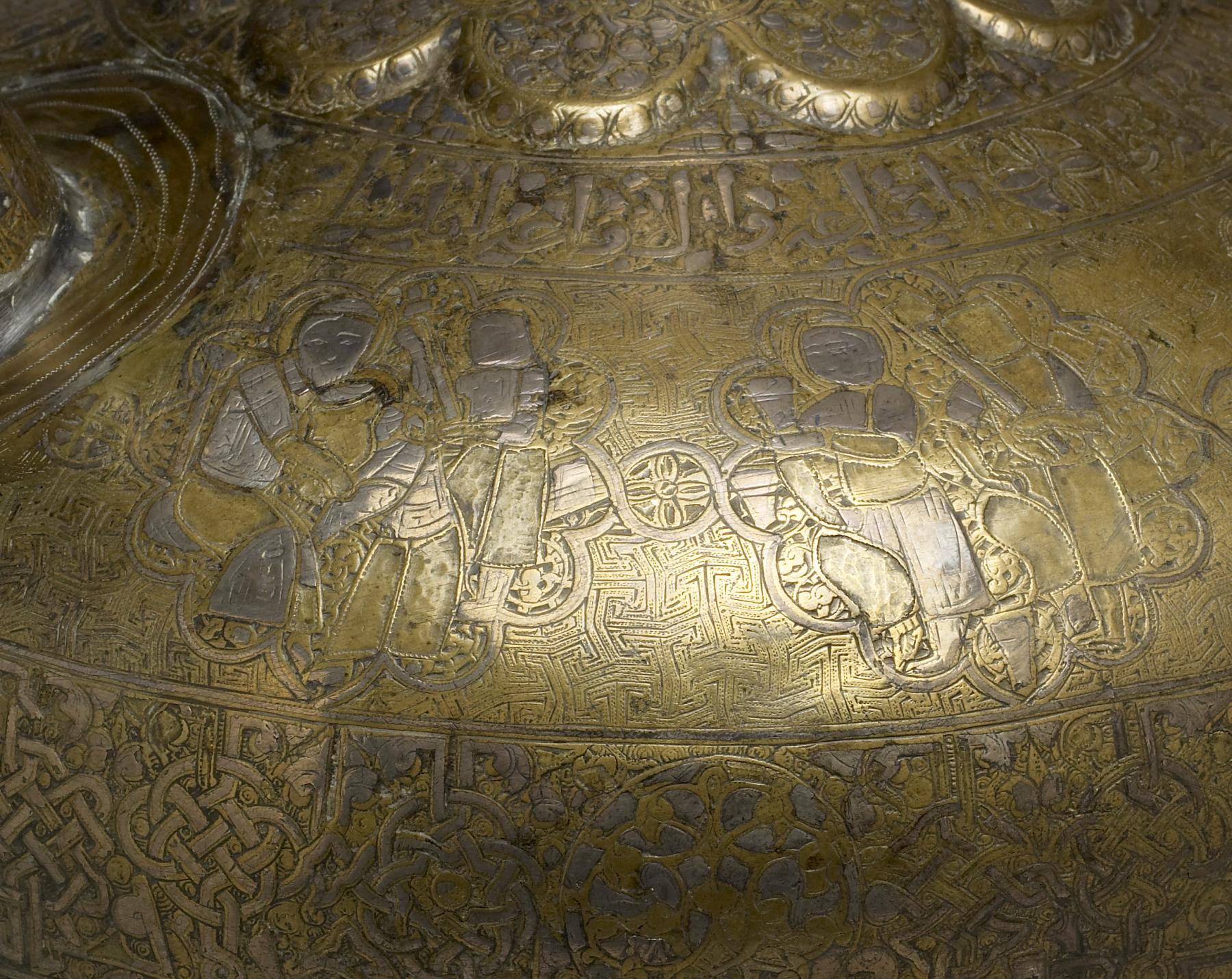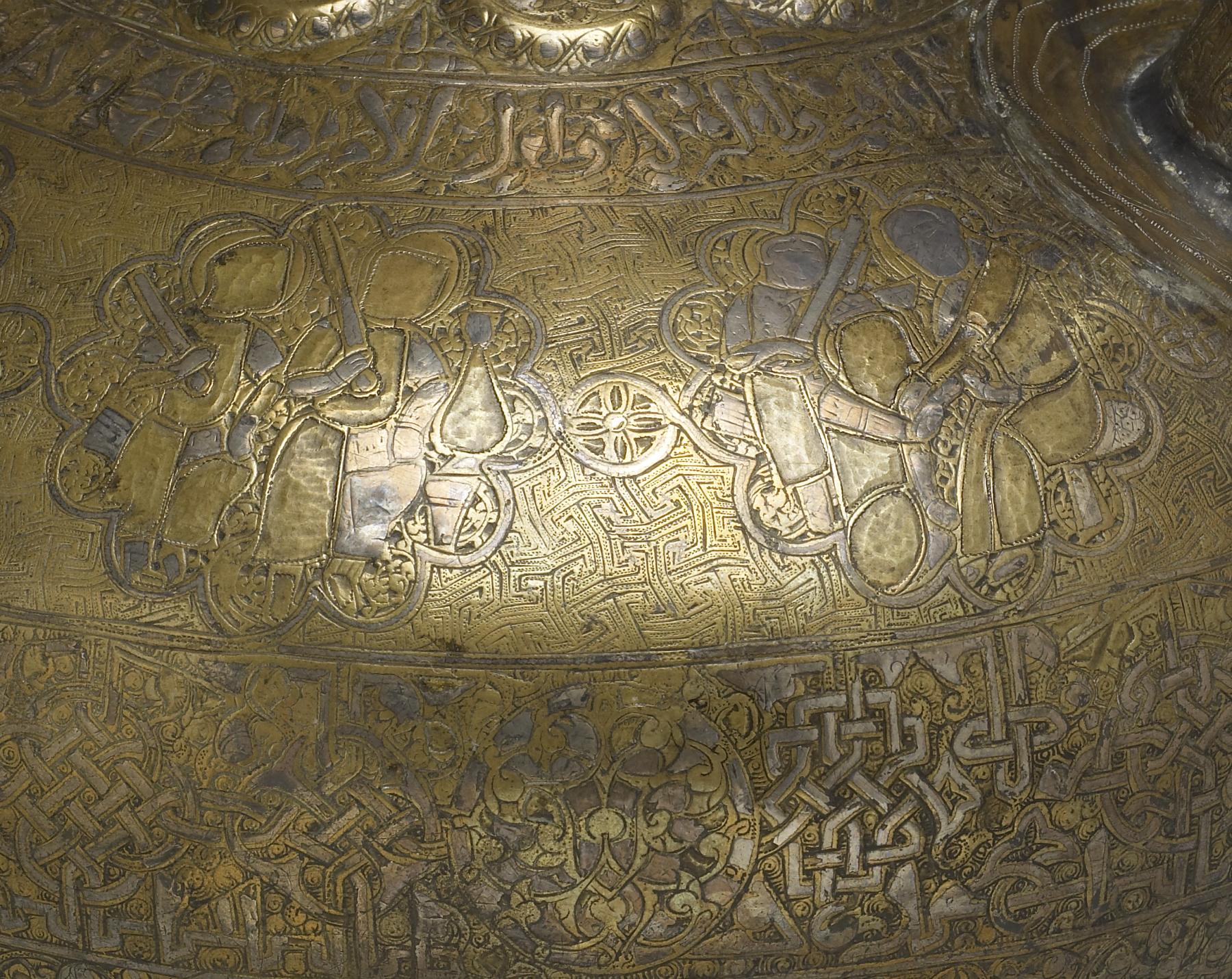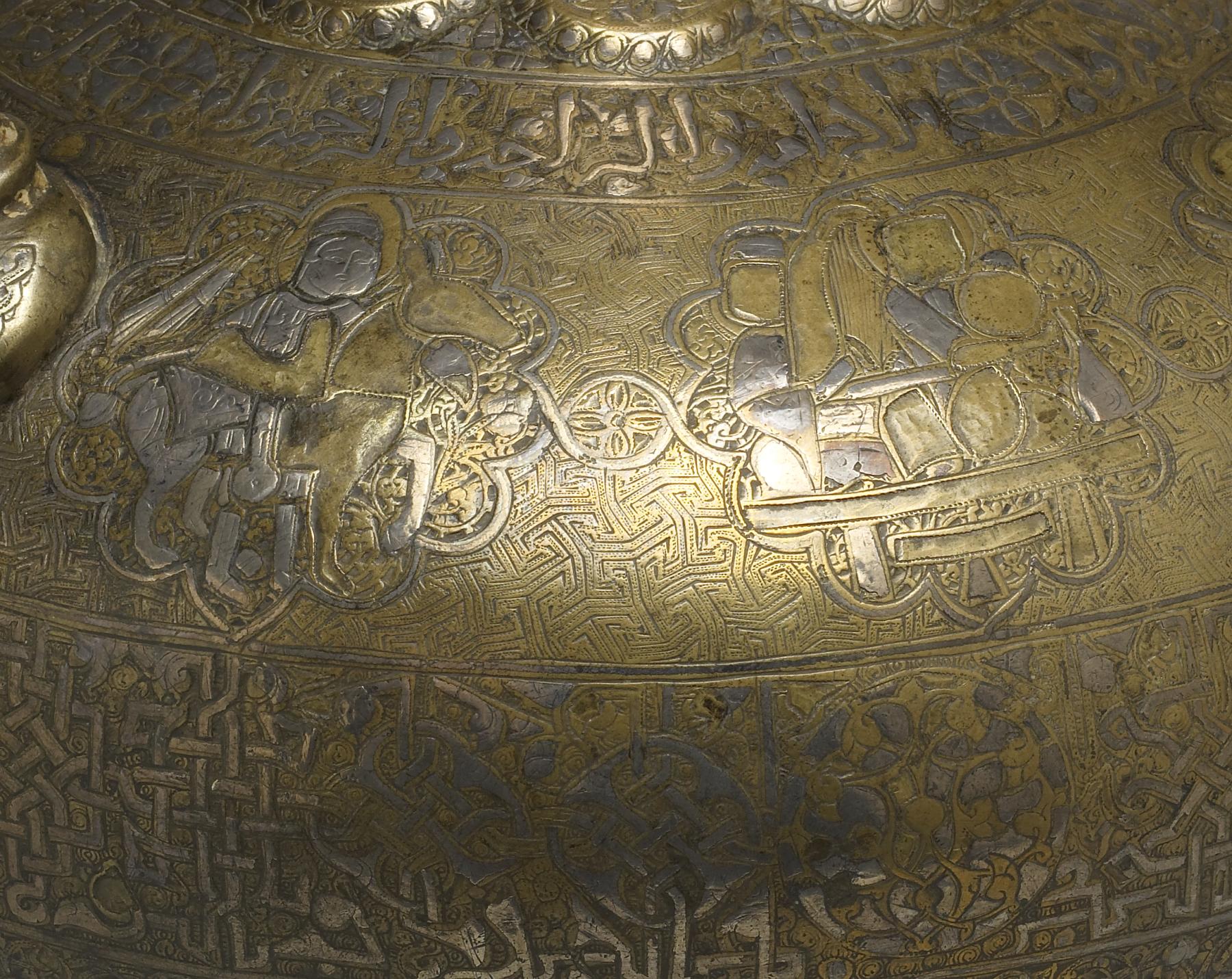Ewer
(Islamic World )
The artist of this ewer included his signature around the base of the vessel’s neck. Yunus ibn (son of) Yusuf names himself al-naqqash (artist or designer). He also claims the name al-Mawsili, meaning “from Mosul,” thus connecting his identity and his work with the city (in present-day Iraq), a famous metalworking center. Typical of ewers with inlaid decoration, several figural scenes are situated around the body of the vessel. These scenes include depictions of hunters on horseback, musicians playing beneath a tree, and an enthroned ruler.
Inscription
Provenance
Provenance (from the French provenir, 'to come from/forth') is the chronology of the ownership, custody, or location of a historical object.
Dikran Kelekian, New York and Paris; Henry Walters, Baltimore, 1917, by purchase; Walters Art Museum, 1931, by bequest.
Exhibitions
| 2019-2021 | Excursions through the Collection: Portraiture, Adornment, and the Natural World. |
| 2016 | Court and Cosmos: The Great Age of the Seljuqs. The Metropolitan Museum of Art, New York. |
| 1998-2001 | Highlights from the Collection. The Walters Art Gallery, Baltimore. |
| 1940 | Exhibition of Persian Art. Iranian Institute, New York. |
Conservation
| Date | Description | Narrative |
|---|---|---|
| Treatment | Cleaned to reduce silver tarnish in preparation for exhibition. | |
| Treatment | Cleaned | |
| 1/1/1930 | Treatment | other |
| 2/3/1971 | Treatment | cleaned |
| 7/26/1974 | Treatment | cleaned |
| 10/27/2015 | Examination | Cleaned for exhibition |
Geographies
Iraq, Mosul (Place of Origin)
Measurements
H: 17 1/2 x W: 12 1/2 x D: 6 1/2 in. (44.5 x 31.8 x 16.5 cm)
Credit Line
Acquired by Henry Walters, 1917
Location in Museum
Accession Number
In libraries, galleries, museums, and archives, an accession number is a unique identifier assigned to each object in the collection.
In libraries, galleries, museums, and archives, an accession number is a unique identifier assigned to each object in the collection.
54.456

